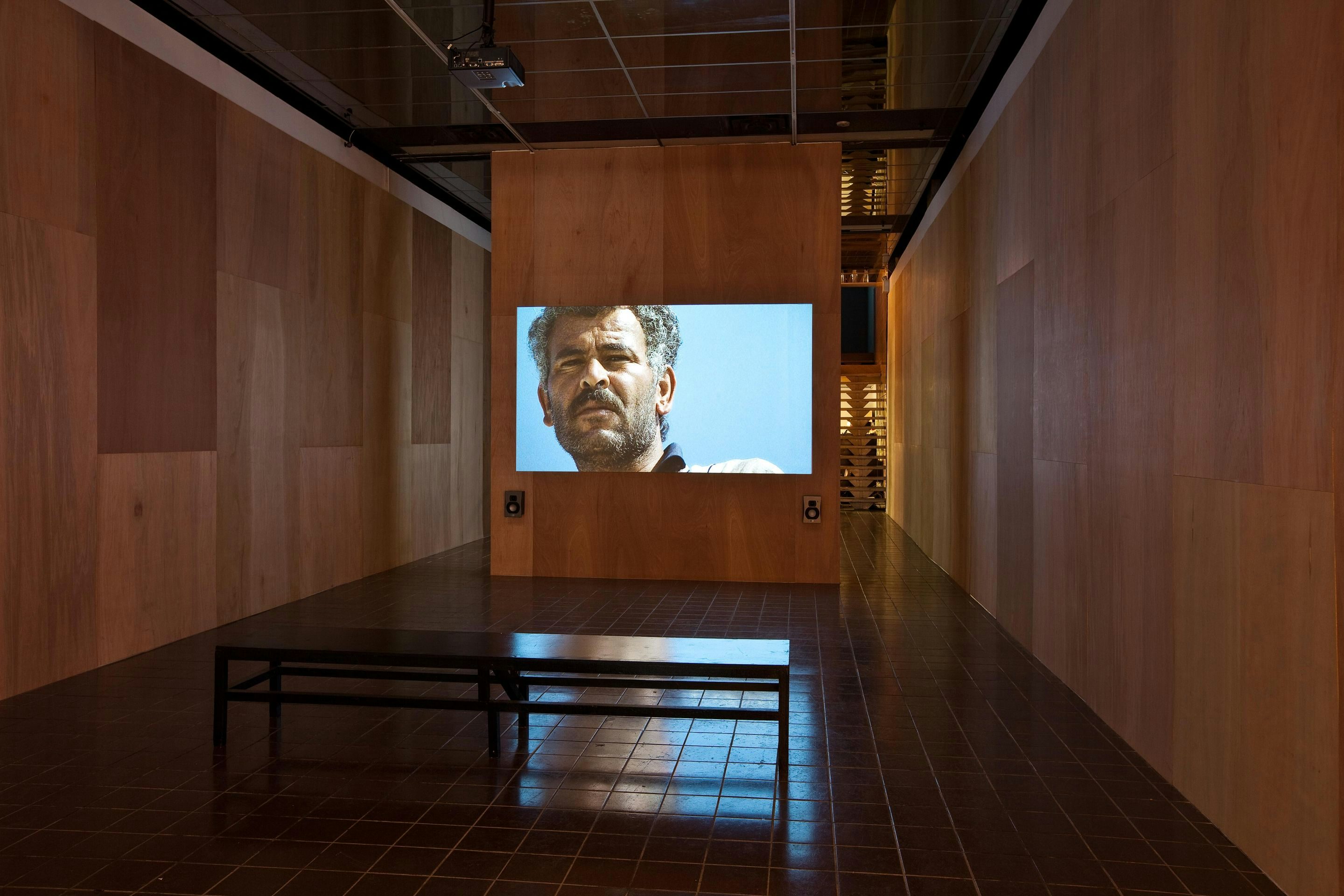
Yael Bartana
Le Mois de la Photo à Montréal
2009.09.11 - 10.24
GAËLLE MOREL
Le Mois de la Photo à Montréal and VOX present an exhibition gathering the works of the artist Yael Bartana around the theme The Spaces of the Image.
In her video installation Summer Camp + Awodah (2007), Israeli/Dutch artist Yael Bartana also uses the principle of double projection to break away from documentary conventions. The work refers to symbols and myths drawn from the history of Israel, appropriating the language, music, and images of 1930s-style propaganda. The work consists of two screens placed back to back inside a wooden projection booth. On one side, Bartana shows the rebuilding of a Palestinian house demolished by the Israeli army in the village of Anata, east of Jerusalem, during the summer of 2006. The house is being rebuilt by local villagers with the help of a group of European and Israeli volunteers who are members of a nongovernmental organization known as the Israeli Committee Against House Demolition, which undertakes singular acts of non-violent resistance by choosing to build rather than destroy.1 Traditionally, construction has symbolized the renaissance of the Jewish people and its resurrection in the land of Israel.
Running at the same time as this video is an excerpt from Helmar Lerski’s film Awodah (1935), which was made to promote the immigration of Jewish pioneers from Eastern Europe to Palestine. The music for the film, composed by Paul Dessau and scored for an ensemble of ten musicians playing Western and Arabic instruments, accompanies both projections. Although the soundtrack matches the lyricism of the epoch that produced it, it generates a deep rift between the images and the melody. The musical synchrony accentuates the visual divergence. In order to resist expansionist ideology, Bartana has adopted the formalist propaganda codes used in films commissioned by the Jewish Agency for Israel and the Jewish National Fund. Handed down from socialist realism, these include low-angle shots, close-ups, the glorification of the body, a concentration on productive endeavours and a lack of dialogue. Thus Bartana employs the “heroic ideological language of the Zionist enterprise to demonstrate its disintegration.”2